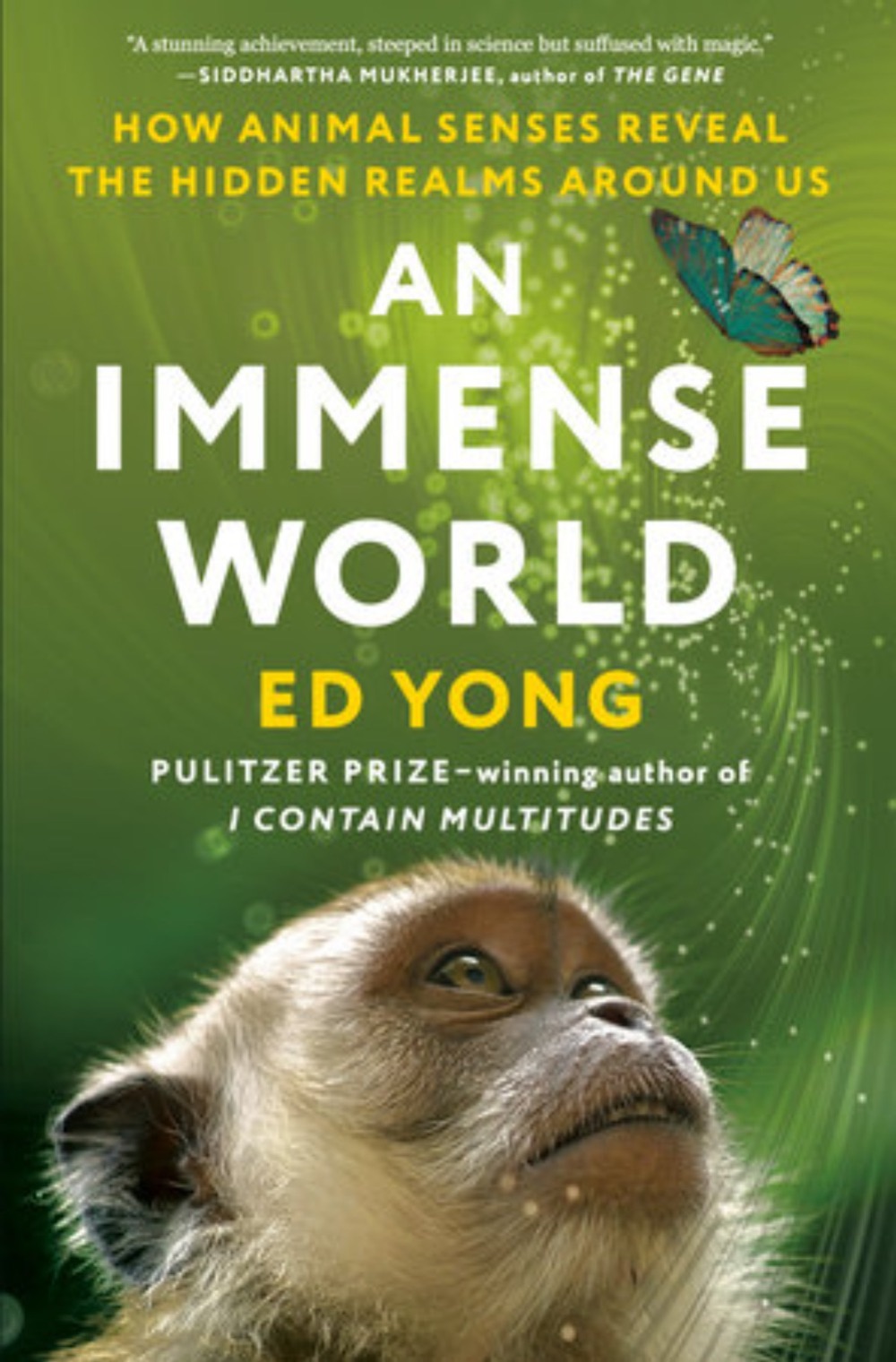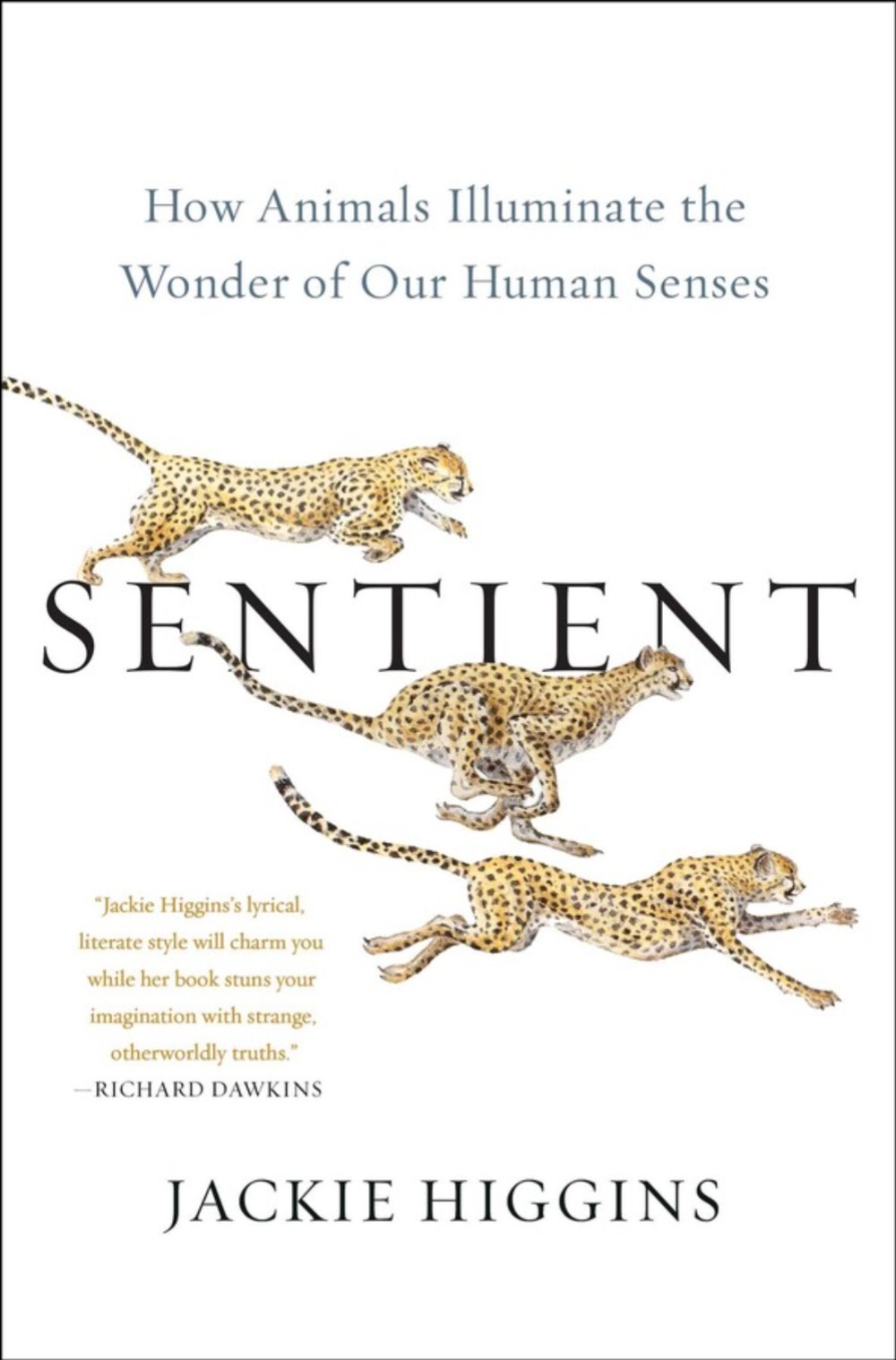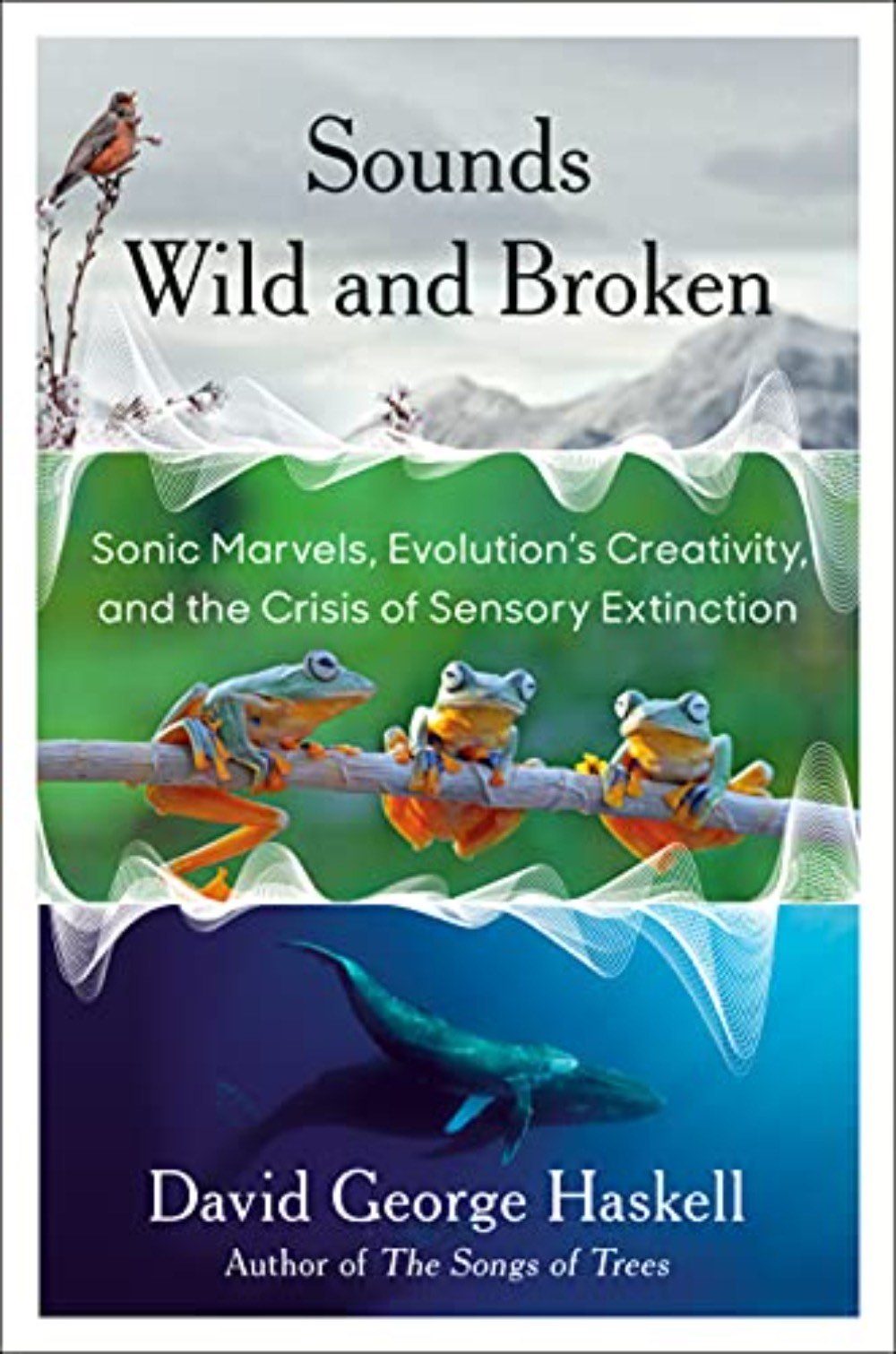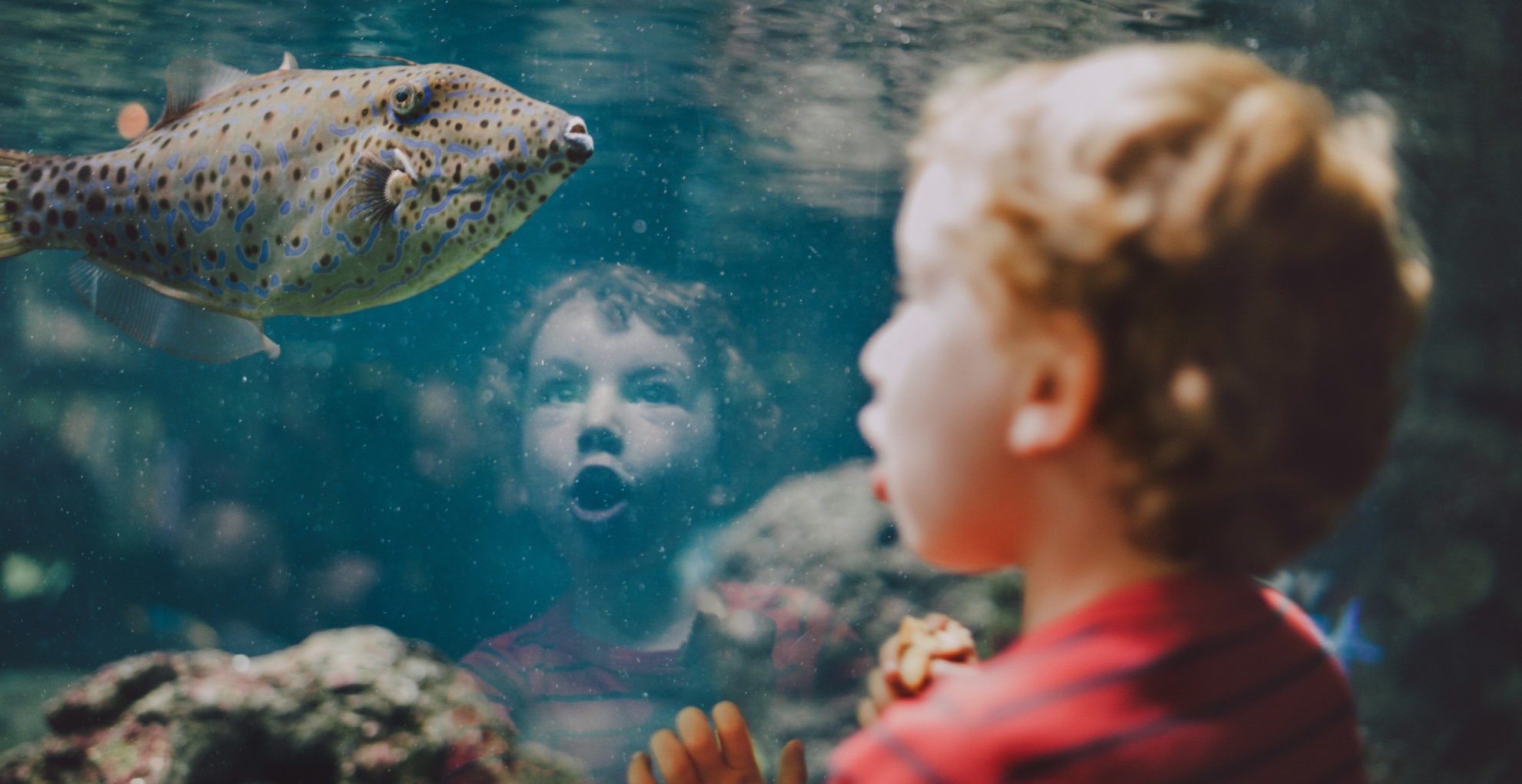What is special about humans that sets us apart from other animals? Less than some of us would like to believe.
As scientists peer more deeply into the lives of other animals, they’re finding that our fellow creatures are far more emotionally, socially, and cognitively complex than we typically give them credit for. A deluge of innovative research is revealing that behavior we would call intelligent if humans did it can be found in virtually every corner of the animal kingdom. Already this year scientists have shown that Goffin’s cockatoos can use multiple tools at once to solve a problem, Australian Magpies will cooperate to remove tracking devices harnessed to them by scientists, and a small brown songbird can sometimes keep time better than the average professional musician — and that’s just among birds.
This pileup of fascinating findings may be at least partly responsible for an increase in people’s interest in the lives of other animals — a trend that’s reflected in an apparent uptick in books and television shows on the topic, as well as in legislation concerning other species. Public sentiment in part pushed the National Institutes of Health to stop supporting biomedical research on chimpanzees in 2015. In Canada, an outcry led to a ban in 2019 on keeping cetaceans like dolphins and orcas in captivity. And earlier this year, the United Kingdom passed an animal welfare bill that officially recognizes that many animals are sentient beings capable of suffering, including invertebrates like octopuses and lobsters.

BOOK REVIEW — “An Immense World: How Animal Senses Reveal the Hidden Realms Around Us,” by Ed Yong (Random House; 464 pages).
Visual: Penguin Random House
Many of these efforts are motivated by human empathy for animals we’ve come to see as intelligent, feeling beings like us, such as chimpanzees and dolphins. But how can we extend that concern to the millions of other species that share the planet with us?
Three recent books take on one of the major barriers to empathy for other animals: the particular way we sense and experience the world, or perceptual bias. Each of these books aims to break down our human-centered perspective by pointing out our sensory blind spots and using various strategies to illuminate the vast array of animal sensory realms that are often incredibly different from our own.
Ed Yong, a staff writer for The Atlantic and author of “An Immense World: How Animal Senses Reveal the Hidden Realms Around Us,” points out that even the use of metaphors like “blind spots” betrays how heavily most humans depend on — and favor — the visual sense. “Earth teems with sights and textures, sounds and vibrations, smells and tastes, electric and magnetic fields,” Yong writes. “But every animal can only tap into a small fraction of reality’s fullness.” Our fraction is dominated by vision.
Part of Yong’s strategy to help readers overcome this visual bent is to provide a truly immense amount of information about what science has learned about animal senses, from hearing and taste to echolocation and magnetoreception — down to the physics and biology of how some of those senses work. Along the way, he shows how much is going on around us that we cannot detect at all. Scientists are no exception, and Yong illustrates how their bias toward more familiar senses has limited what we know about other animals. “Experiments that might reveal how they use their senses are hard to design,” he writes, “especially when those senses are drastically different from ours.”
To guide readers on this jam-packed, fascinating tour of animal perception, he borrows the concept of the Umwelt, the unique sensory perspective of an individual species or organism. Developed by Baltic-German zoologist Jacob von Uexküll in the early 20th century, the Umwelt idea has long been employed by scientists, philosophers, writers, and even roboticists in their attempts to understand how the world is perceived with different kinds of eyes and ears, and wholly unfamiliar sensors as well.
“Stepping between Umwelten, or at least trying to, is like setting foot upon an alien planet,” Yong writes. What is it like to be an elephantfish, both creating and sensing electric fields? “A river full of electric fish must be like a cocktail party where no one ever shuts up, even when their mouths are full.” Or a mole pressing the walls of its burrow with an exquisitely touch-sensitive star-shaped snout? “With every press, its environment comes into focus in a starburst of textures. I imagine that each one adds to a continuous model of the tunnel that builds in the mole’s mind, like a pointillist image appearing dot by dot.”
As Yong warns in his introduction, imagining these alien worlds from within our human sensory bubble is challenging. And while his analogies are often fun and evocative, they can also feel unsatisfying. This is partly because his focus is on animals’ sensory experience, and he stops short of exploring their inner lives. But it may also be due to the inescapable nature of what he’s seeking to describe. Philosopher Thomas Nagel may have been right when he posited in his famous 1974 essay “What Is It Like to Be a Bat?” that we can never really know. We may be able to imagine what it is like for a human to behave like a bat, “but that is not the question,” Nagel wrote. “I want to know what it is like for a bat to be a bat.”
Even so, Yong’s assertion that there is inherent value in attempting to understand what it’s like to be a bat, or any other being, is spot on. This is a crucial step toward enlarging our circle of empathy. And he does an impressive job of explaining the large and growing body of research that is getting us closer to at least a partial understanding of how other animals perceive the world.
In “Sentient: How Animals Illuminate the Wonder of Our Human Senses,” British author Jackie Higgins covers some of the same sensory territory as Yong — even interviewing a few of the same scientists and describing the same classic experiments — but through a very different lens. Her primary interest is exploring the sensory overlap between humans and other animals. And because she’s more interested in the human experience, she avoids the deep end of Nagel’s dilemma.
After disabusing her readers of the notion that humans have just five senses — there may in fact be dozens, depending on how you count them — Higgins devotes each of her 12 chapters to a different human sense, focusing on how each one works in another species. Through animals like the spookfish, the cheetah, and the bar-tailed godwit, she tells the stories of the scientists who made discoveries about these animals’ abilities to see in the dark, balance themselves, and sense direction. And she shows how those findings led to revelations about our own senses, such as the fact that humans have discrete senses of taste (similar to a catfish) and the possibility that we may be able to sense magnetic fields (like migrating birds).

BOOK REVIEW — “Sentient: How Animals Illuminate the Wonder of Our Human Senses,” by Jackie Higgins (Atria Books; 320 pages).
Visual: Simon & Schuster
Like Yong, her ultimate aim is to broaden and enliven our narrow human view of the world: “Through their eyes, ears, skins, tongues, and noses,” Higgins writes, “our familiar and ordinary become unfamiliar and extraordinary, and curious new senses emerge.”
But while Yong wants his readers to explore animal senses “to better understand their lives,” Higgins wants us to better understand and savor our own human capabilities. “We are guilty of underappreciating — and underestimating — our sensory powers,” she argues. Our eyes can see more than we think, our noses are more capable than we imagine, and we have extraordinarily sensitive hearing.
Higgins, a wildlife filmmaker with a degree in zoology, has both the science and storytelling chops to make “Sentient” a fun and enlightening read. She skillfully weaves together narratives about seminal discoveries in sensory science, cutting-edge research happening today, and people whose sensory worlds are unusual in some way.
In her fascinating chapter on the sense of time, she intertwines stories about research on the trashline orbweaver, a spider whose internal clock is just 18.5 hours; the 18th-century discovery that a mimosa plant knows the time of day even without the sun; a speleologist who spent months at a time in dark caves to reveal that humans also have an internal clock; a scientist who spent 10 days in a World War II bunker he converted into a lightproof, soundproof isolation unit; a British Army sergeant who suffered brain damage that rendered him “time blind”; and the discovery that mice and other mammals, including humans, have time-sensing cells in their eyes.
One of the most intriguing case studies is that of Ian Waterman, who as a young man lost his sense of proprioception — the ability to sense where your body is in space — leaving him unable to move from the neck down. “It was as if I had been disembodied,” he told Higgins. Waterman gradually relearned how to move and walk, keeping track of where his limbs are by watching them. The octopus might use conscious attention in a similar way to assert control over its eight limbs that are otherwise free to explore on their own like semi-autonomous individual beings, she writes: “It is a consciousness that seems to shape-shift like the octopus’s body.”
But with so many captivating and relatable stories of extraordinary human Umwelten, Higgins misses an opportunity to push readers to be more open to different ways of being in the world and to feel a closer connection to the animals whose sensory worlds she describes.
Both Yong and Higgins close on a forward-looking note, but with different messages. Higgins looks ahead to “a new dawn for the human senses,” enabled by our brain’s neuroplasticity and aided by technology. She notes that we’re already seeing the development of implants that cure blindness by recruiting the tongue to “see,” and vibration vests to help deaf people “feel” sound. And biohackers are looking for sensory enhancements. “We see only a ten-trillionth of the electromagnetic spectrum; imagine extending our range to perceive infrared heat like a rattlesnake or see ultraviolet light like a honeybee,” she writes. It’s up to us to decide what we want our reality to be.
Yong concludes with a more urgent and compelling message: We need to care enough about the sensory worlds of other animals to help save those worlds before it’s too late. “Through centuries of effort, people have learned much about the sensory worlds of other species,” he writes. “But in a fraction of that time, we have upended these worlds.” With light, sound and chemical pollution, we’re drowning out the sensory cues animals use to communicate and survive. “Instead of stepping into the Umwelten of other animals, we have forced them to live in ours by barraging them with stimuli of our own making.”
In “Sounds Wild and Broken: Sonic Marvels, Evolution’s Creativity, and the Crisis of Sensory Extinction,” biologist David George Haskell drives this point home even more forcefully by delving deeply into a smaller slice of the sensory landscape: the way humans and other animals sense sound. He explores the sonic world from every angle — physiology, evolution, conservation, culture, history, philosophy. He does an admirable job describing soundscapes across the globe through words — not an easy task — and starkly lays out how those sounds are threatened.

BOOK REVIEW — “Sounds Wild and Broken: Sonic Marvels, Evolution’s Creativity, and the Crisis of Sensory Extinction,” by David George Haskell (Viking; 446 pages).
Visual: Penguin Random House
He takes readers to the eastern slope of the Colorado Rocky Mountains, where the unique, low-frequency sound the wind makes roaring through pine and spruce trees has shaped the red crossbill’s song, which is higher-pitched than other birds of its size. “The bird keeps singing, somehow penetrating the fog of noise,” he writes. “The song’s fine brushwork stands out, strokes of luminous pigment against the gray wash of wind.” In the Amazon, he layers descriptions of individual species of birds, insects, and frogs, building up a sense of the “extreme blast of sensory diversity that stuns my auditory palate.”
We also learn about soundscapes that humans can’t hear without technology. Electronic sensors clipped to the stems and branches of vegetation reveal the vibratory communication of leafhoppers and treehoppers, each species specifically tuned to the sonic qualities of its preferred plant. By dropping an underwater microphone into a salt marsh, the acoustic world of snapping shrimp bursts to life, like a pan of sizzling bacon fat. “Sparkles surround me, a sonic shimmer,” Haskell writes. “Every glistening fragment is a fleck of sunlit copper, warm and flashing.”
Throughout the book, he shows how humans are mucking up these intricate combinations of sound that animals make, hear, and rely upon to flourish. The revelations are upsetting, but his description of what’s happening underwater may be the most devastating. “If there is an acoustic hell, it is in today’s oceans,” Haskell writes.
The lives of orcas in the Salish Sea, for example, are being degraded by human noise pollution, drowning out their distinct vocal cultures. In combination with other threats, including chemical pollution, this auditory infringement is pushing them toward population collapse. “Here off the coast of San Juan Island, the whales’ voices are like fine silk stitched into a thick denim of propeller and motor sound,” he writes, “clicks and whistles sometimes audible, but often disappearing into the tight weave of engines.”
Reestablishing a connection with the sounds of the natural world is a critical step toward changing this damaging trajectory, Haskell argues. But we must also overcome the barrier between ourselves and the creatures whose sensory worlds lie beyond our perceptual abilities, and expand our moral circle to include them.
“Our senses bias us toward feelings of kinship with species whose communicative sounds most closely resemble ours,” he writes. “Because concern follows closely on the heels of empathic connection, our senses shape our ethics.”
Betsy Mason is a freelance journalist based in the San Francisco Bay area and a 2022 Alicia Patterson Foundation fellow reporting on how the science of animal minds is changing how we think about us and them.










